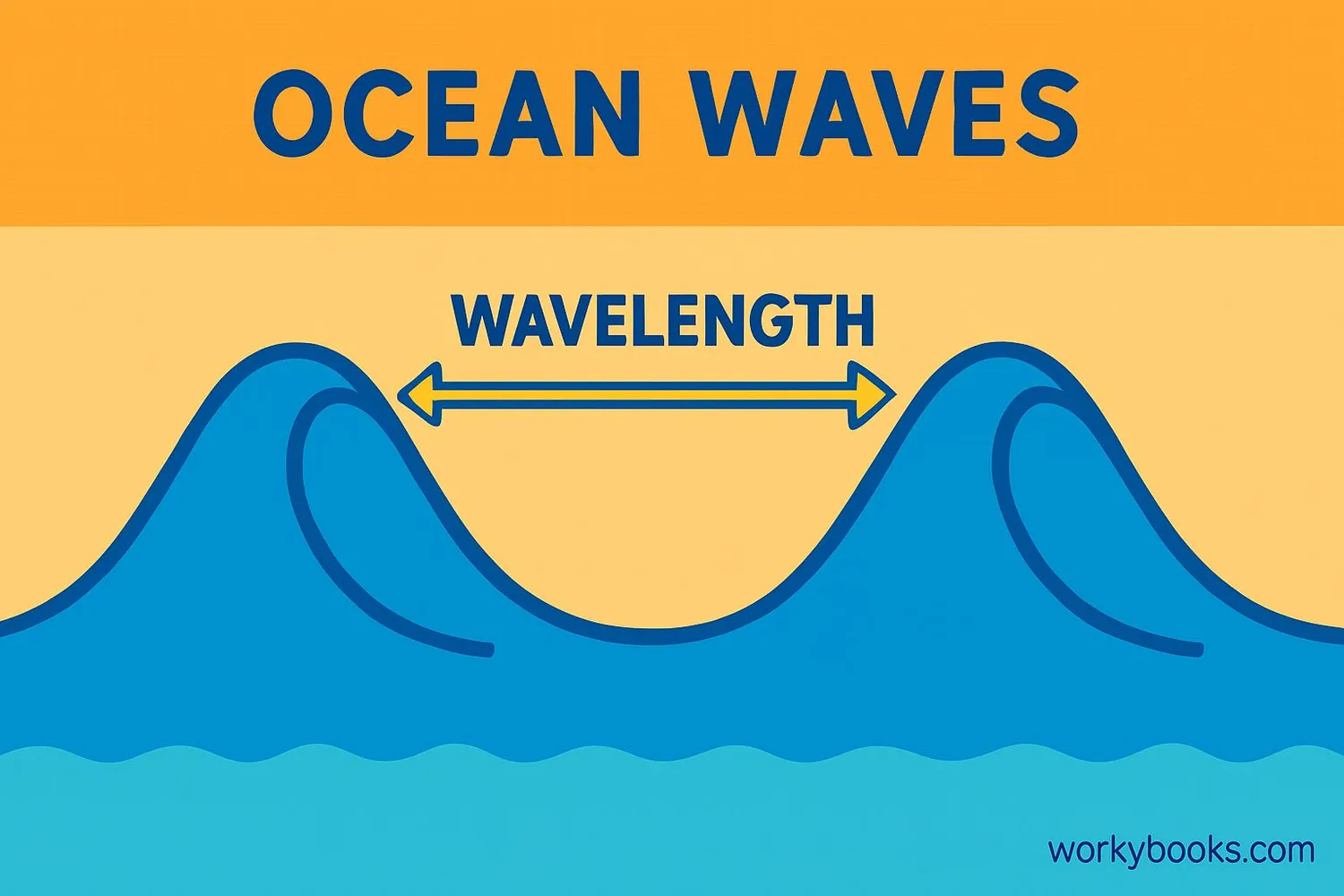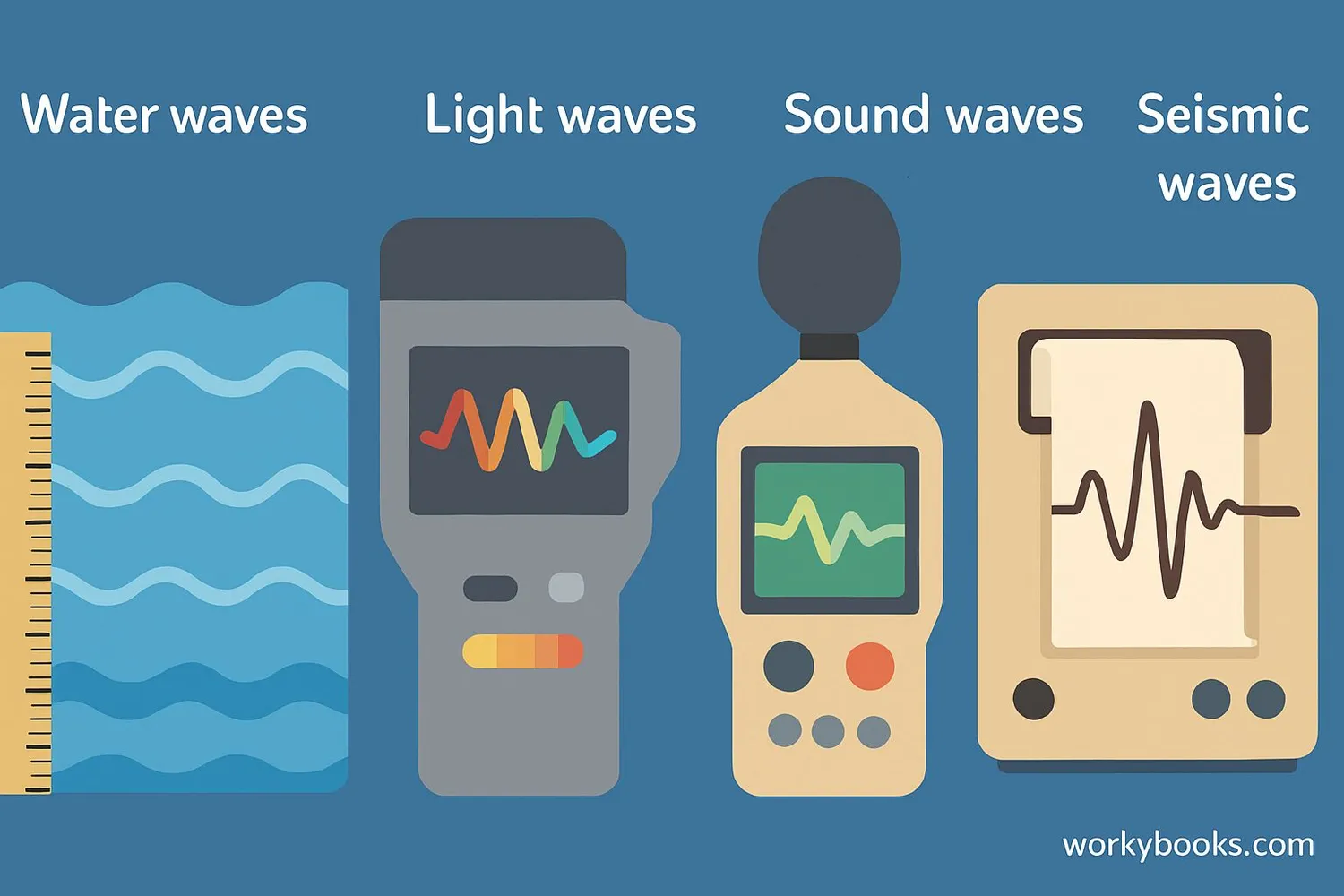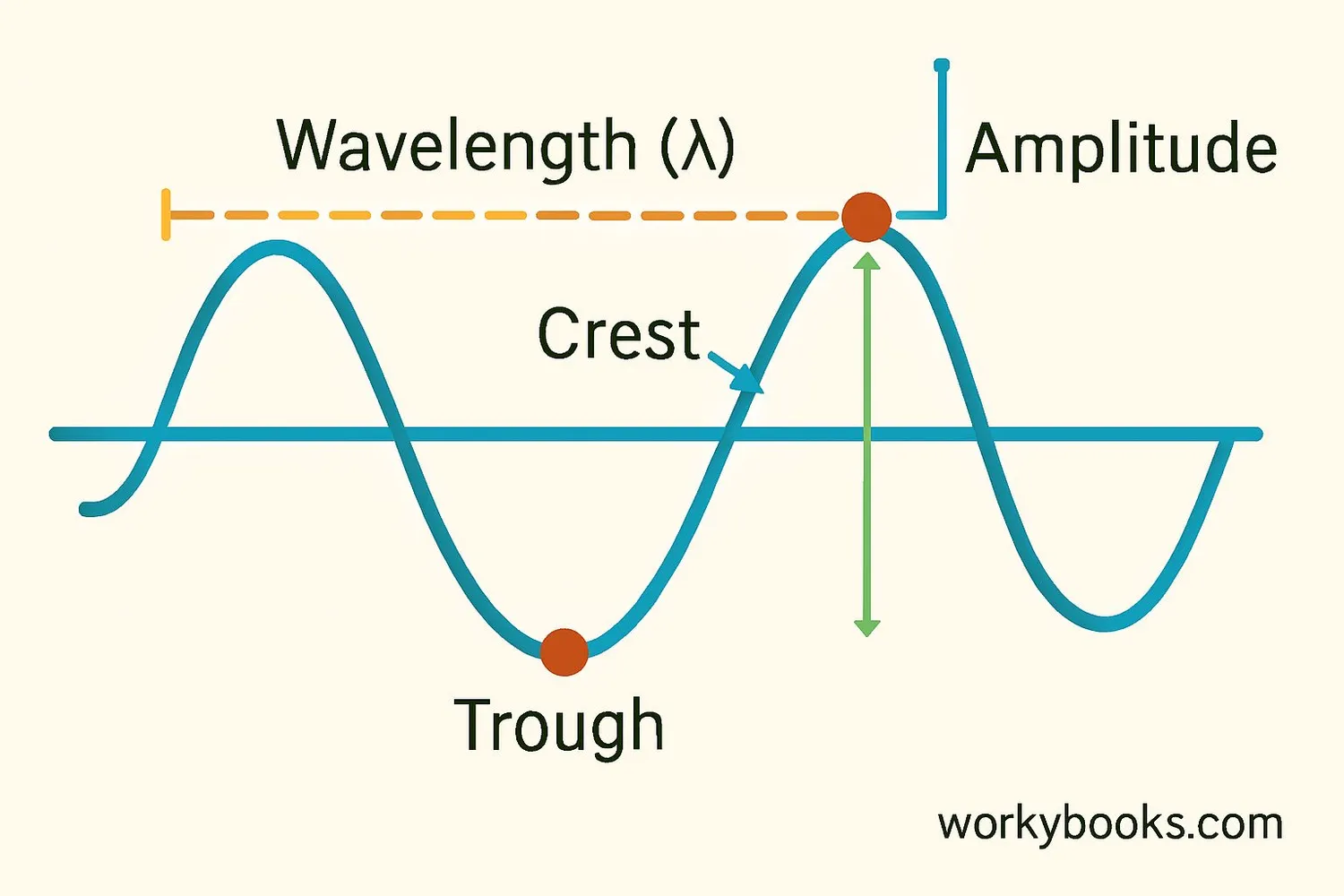Wavelength - Definition, Examples, Quiz, FAQ, Trivia
Discover how waves carry energy and information all around us
What is Wavelength?

Wavelength is the distance between two identical points on consecutive waves. Imagine ocean waves rolling to shore - the wavelength is the distance from the top of one wave to the top of the next wave. Scientists use the Greek letter lambda (λ) to represent wavelength.
Wavelength is a fundamental property of all waves, whether they're ocean waves, sound waves, or light waves. The size of the wavelength determines many characteristics of the wave, including how much energy it carries and how it interacts with objects.
Wave Fact!
Visible light has wavelengths between 400 nanometers (violet) and 700 nanometers (red) - that's smaller than a single bacterium!
Measuring Waves

Scientists measure wavelength using different units depending on the type of wave:
SI Unit
The standard unit is the metre (m)
Small Waves
Millimetres (mm) or micrometres (μm)
Light Waves
Nanometres (nm) - billionths of a meter
Radio Waves
Metres or kilometres
To measure wavelength, scientists:
1. Identify two identical points on consecutive waves (usually peaks)
2. Measure the distance between them
3. Express the measurement using the appropriate unit
The dimensional formula for wavelength is [L], meaning it's a measurement of length.
Measurement Tip!
When measuring wavelength, always measure from the same point on consecutive waves - peak to peak or trough to trough for accuracy!
Wave Properties

Wavelength is connected to other important wave properties:
Frequency
Number of waves passing a point per second (measured in Hertz). Wavelength and frequency are inversely related
Amplitude
Height of the wave from rest position to crest. Determines wave energy
Speed
Wave speed = Frequency × Wavelength. This applies to all wave types
Key relationships:
• Longer wavelength = Lower frequency
• Shorter wavelength = Higher frequency
• Higher amplitude = More energy
These properties help us understand how different waves behave - from why blue light bends more than red in a prism to why bass sounds travel farther than treble.
Wavelength Quiz
Test your knowledge with this wavelength quiz! Answer all 5 questions to see how much you've learned.
Frequently Asked Questions
Here are answers to common questions about wavelength:
Fun Wavelength Trivia
Discover some amazing facts about wavelengths!
Animal Vision
Bees can see ultraviolet light with wavelengths too short for humans to see. Flowers have special ultraviolet patterns that guide bees to their nectar!
Cosmic Waves
The longest known radio waves in the universe can be light-years long! These come from giant clouds of gas in space.
Historical Measurement
The meter was originally defined as one ten-millionth of the distance from the equator to the North Pole, but today it's defined using the wavelength of light!
WiFi Waves
Your home WiFi uses radio waves with wavelengths of about 12 centimeters. That's why your router can send signals through walls!


